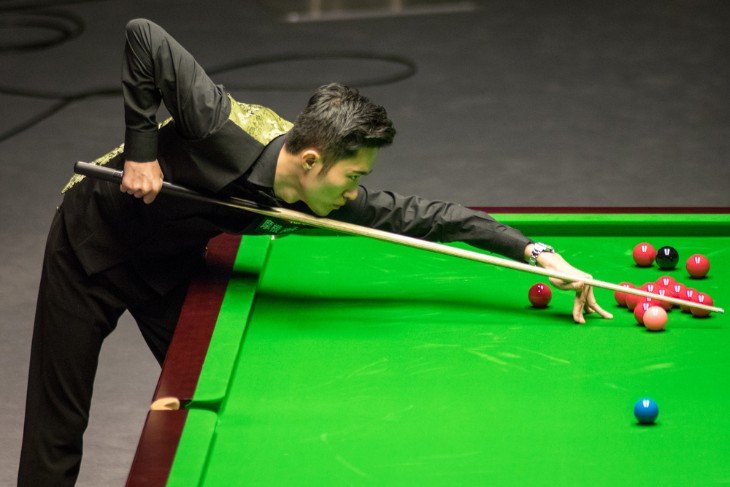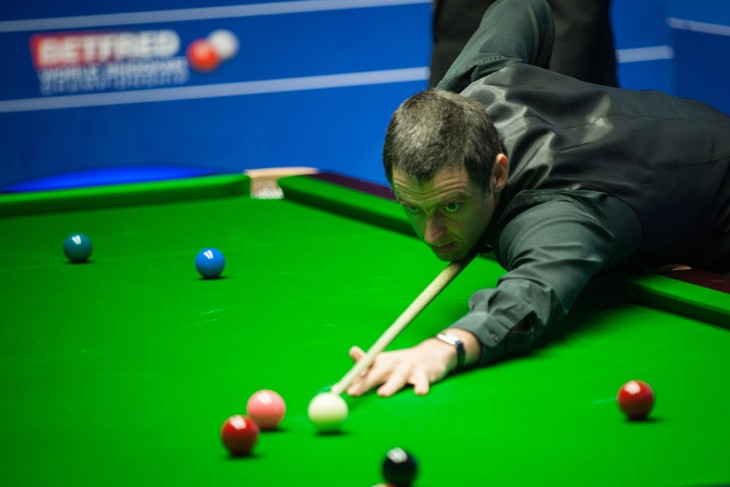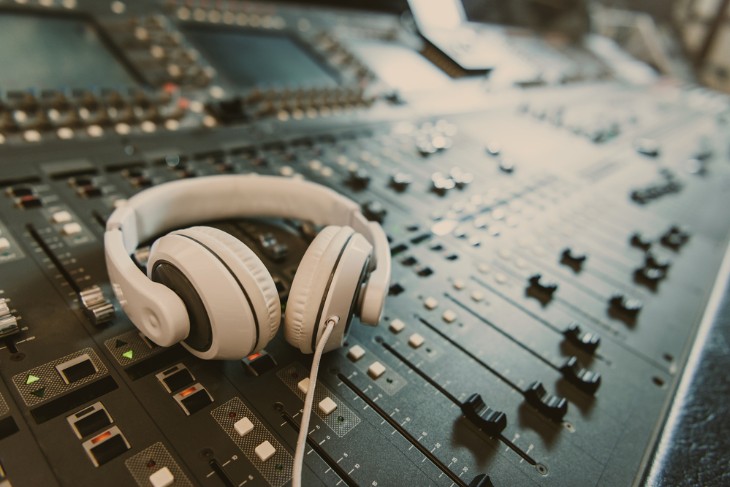Snooker, a precise and highly skilled cue sport, demands the utmost concentration and focus from players. In the quiet, controlled environment of a snooker hall, sound plays a critical role in the overall experience. The impact of sound in snooker halls extends far beyond mere ambiance; it can significantly influence the performance of players and the satisfaction of spectators.
The acoustics of a snooker hall determine how sound behaves within its walls. The level of sound, its distribution, and how it interacts with surfaces all contribute to the auditory environment. In a sport where a slight distraction can mean the difference between success and failure, understanding and managing the acoustic properties of a snooker hall is essential.
The Basics of Acoustics
To comprehend the impact of sound in snooker halls, one must first grasp the fundamentals of acoustics. Acoustics is the branch of physics that deals with the study of sound, its production, transmission, and effects. In the context of snooker halls, it involves understanding how sound waves behave within an enclosed space.
Sound is a mechanical wave that travels through a medium, usually air, in the form of compressions and rarefactions. The speed of sound in air is approximately 343 meters per second at room temperature. When a sound source, such as a cue striking a ball or the murmur of spectators, emits sound waves, they propagate through the air until they encounter surfaces or objects. At this point, the behavior of sound waves can vary based on factors like frequency, amplitude, and the characteristics of the surfaces they interact with.
Sound Absorption Materials
Sound absorption is a key consideration in the design and acoustics of snooker halls. It involves reducing the reflection of sound waves off surfaces within the hall. Without adequate sound absorption, sound waves can bounce around the space, leading to unwanted echoes and an overall noisy environment. This is particularly problematic in a snooker hall, where silence and concentration are paramount.
Various sound absorption materials are used to address this issue. One common choice is acoustic panels or tiles made from materials like foam, fabric, or mineral wool. These panels are strategically placed on walls and ceilings to absorb sound energy, preventing it from bouncing back into the playing area. Additionally, carpeting and drapes can also contribute to sound absorption, reducing reverberation and creating a more controlled auditory environment.
The selection of sound absorption materials depends on factors like the hall's size, shape, and intended use. Properly chosen and placed materials can significantly enhance the acoustic quality of the snooker hall, ensuring that players can focus without being distracted by excessive noise.

Sound Reflection and Transmission
In contrast to sound absorption, sound reflection and transmission are phenomena that designers and acousticians seek to minimize in snooker halls. Sound reflection occurs when sound waves bounce off hard surfaces, while sound transmission refers to the passage of sound through walls or barriers. Both of these can create disruptions in the auditory environment of a snooker hall.
Excessive sound reflection can lead to echoes and a confusing soundscape for players. To combat this, surfaces within the hall can be designed to minimize reflection. This may involve the use of textured or uneven materials that diffuse sound waves, preventing them from bouncing directly back towards the source.
Sound transmission, on the other hand, can lead to external noise entering the snooker hall or vice versa, disturbing both players and spectators. Properly insulated walls and barriers can mitigate sound transmission, ensuring that the outside world remains outside and that the tranquility inside the snooker hall is preserved.
Noise Sources in Snooker Halls
In the context of snooker, where concentration is key, noise can be a significant disruptor. To maintain an ideal playing environment, it's essential to identify and manage potential noise sources within snooker halls. These noise sources can be both internal and external.
Internal noise sources within a snooker hall often include the movements and actions of players and spectators. The clatter of balls, the tapping of cues, and even the shuffling of feet can all contribute to the overall noise level. Controlling these internal noise sources requires a combination of design choices and player awareness. For instance, providing players with cues that have soft tips or implementing carpeting can help dampen sound. Moreover, encouraging spectators to maintain a respectful level of quietness can also play a significant role in reducing internal noise.
External noise sources, such as traffic, nearby construction, or other activities in the vicinity of the snooker hall, can be equally disruptive. Adequate sound insulation in the hall's walls and ceilings can help shield it from external noise, ensuring that players can focus without unwanted distractions.
Impact of Sound on Players
The effect of sound on snooker players cannot be overstated. In a game where precision and concentration are paramount, even the slightest distraction can lead to missed shots and costly errors. Sound can influence players in several ways.
Firstly, sudden or unexpected loud noises, such as the breaking of balls or loud conversations, can startle players and disrupt their concentration. Secondly, echoes and reverberations in the snooker hall can distort the perception of sound, making it difficult for players to gauge distances and angles accurately. Lastly, a consistent and distracting background noise level can be mentally fatiguing, leading to decreased performance over time.
To mitigate the impact of sound on players, snooker hall designers and operators must pay close attention to acoustics. By employing sound-absorbing materials, minimizing sound reflection, and controlling noise sources, they can create an environment that allows players to perform at their best.
Audience Experience and Sound
In a snooker hall, the audience's experience is intimately tied to the acoustics of the space. Unlike other sports venues where crowd noise is an integral part of the atmosphere, snooker demands a quiet and focused environment. The soundscape in a snooker hall should cater to the specific needs of both players and spectators.
For the audience, the clarity of commentary and the ability to follow the game's progression are paramount. The absence of distracting background noise allows for a more immersive experience. To achieve this, sound reinforcement systems can be strategically installed to amplify the commentary while minimizing ambient noise. Additionally, well-designed seating arrangements can help control the movement and conversations of spectators, further enhancing the auditory experience.
Balancing the needs of players and spectators in terms of sound is a delicate task. While the audience seeks a clear and engaging auditory experience, players require a near-silent environment. Achieving this equilibrium involves careful design, sound management, and the use of advanced audio technology.
Regulations and Standards
The quality of acoustics in snooker halls is not solely a matter of preference; it is also subject to regulations and standards to ensure fair play and an enjoyable experience for all. Regulatory bodies and industry organizations have established guidelines that govern the acoustic conditions within snooker halls.
These regulations often focus on limiting external noise intrusion, specifying acceptable noise levels, and ensuring that the acoustic environment does not unduly influence the outcome of a game. Compliance with these standards is crucial for snooker hall operators to maintain a level playing field and a satisfactory experience for both players and spectators.
Additionally, understanding and adhering to these regulations is vital when designing or renovating snooker halls. Architects and acousticians must work in concert to create spaces that meet these standards while optimizing the environment for snooker gameplay.

The Role of Technology
In the modern era, technology plays a pivotal role in shaping the acoustics of snooker halls. From advanced sound reinforcement systems to innovative noise-cancelling solutions, technology offers a range of tools to create the desired auditory environment.
One of the key technologies employed in snooker halls is sound reinforcement. This involves the use of microphones, amplifiers, and speakers to ensure that commentary and announcements are heard clearly by spectators. These systems are strategically positioned to provide even coverage and minimize interference with gameplay.
Noise-cancelling technology is another crucial aspect. It can be used to eliminate unwanted background noise, creating a more focused and serene environment for both players and spectators. This technology can range from simple noise-cancelling headphones for players to sophisticated acoustic treatments that actively suppress ambient noise.
Furthermore, advancements in audio engineering have allowed for precise control of sound distribution within snooker halls, ensuring that the auditory experience is optimized for all stakeholders.
Enhancing Acoustics for Snooker Halls
One fundamental approach is the careful selection of materials. The choice of building materials, including the type of flooring, wall surfaces, and ceiling materials, can significantly influence how sound behaves within a space. For example, materials with sound-absorbing properties can be strategically placed to reduce echoes and improve the overall acoustic quality. Additionally, architectural elements such as curved surfaces and diffusers can help disperse sound waves and create a more balanced auditory environment.
Another critical aspect of enhancing acoustics is the layout and design of the snooker hall. Properly positioning tables, seating, and sound reinforcement systems can ensure that players and spectators experience an ideal auditory environment. Additionally, the incorporation of adjustable acoustic elements, such as movable partitions or curtains, allows for flexibility in tailoring the acoustics to specific events or preferences.
Conclusion
In conclusion, this comprehensive study has delved into the multifaceted relationship between sound and acoustics in snooker halls. We have explored the importance of sound management, the fundamentals of acoustics, and their practical applications in creating an ideal auditory environment for snooker players and spectators alike.
From understanding the basics of sound waves to examining the impact of noise on players and the role of technology in acoustics, we have gained insights into the intricacies of this unique sporting environment.
For more information:




.webp)


 (1).webp)




















